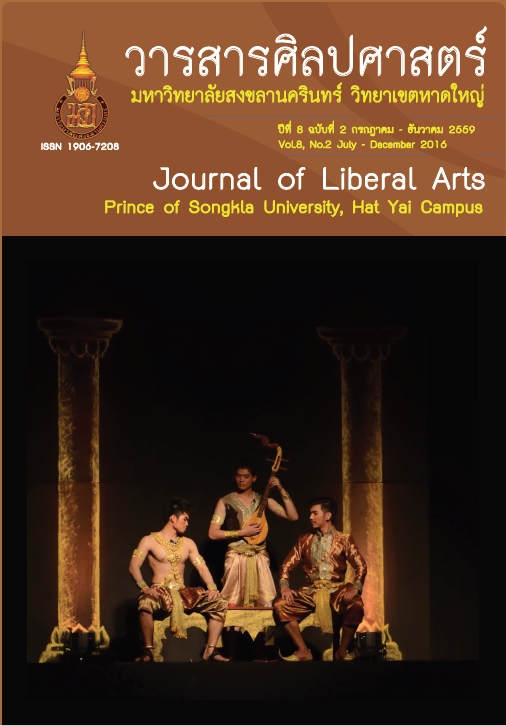A causal relationship model of collaboration for flood management between Local Administrative Organizations and community: A case study of flood beds in Southern Thailand
Keywords:
A causal relationship model, Collaboration, Flood managementAbstract
The purposes of this mixed methods research were to investigate the factors and to examine the goodness of fit model to the empirical data. Data were collected using two procedures. Firstly data were collected through in-depth interviews with 75 flood victims, and focus groups with 50 informants consisting of administrators, council members and government officials of Local Administrative Organizations. The sample groups were selected through purposive sampling from the flood beds in Pak Phanang, Nakhon Si Thammarat Province. The data were analyzed using content analysis. Secondly, the data were collected using a questionnaire asking 400 respondents selected using stratified random sampling from flood victims, administrators, council members and government officials of Local Administrative Organizations in seven provinces with flood beds in the Southern part of Thailand. The data were analyzed using exploratory factor analysis and path analysis. The study found the following.
1. There were six factors relating to collaboration for flood management between Local Administrative Organizations and the community: 1) a flood management process, 2) leadership of local politicians, 3) social relationships, 4) a learning process, 5) communication, and 6) collaboration for flood management.
2. The development of relationship causal model was consistent with the empirical data. Goodness of fit measures were found to be: c2 =8.62 (df = 4, p = 0.071), CFI = 1.00, RMSEA = 0.054, GFI = 0.99, AGFI = 0.96 and SRMR = 0.022
3. The flood management process and the learning process had direct positive influence on the collaboration for flood management with the effect sizes of 0.42 and 0.31, respectively.
Downloads
Published
How to Cite
Issue
Section
License
Copyright (c) 2017 วารสารศิลปศาสตร์ มหาวิทยาลัยสงขลานครินทร์ วิทยาเขตหาดใหญ่ (Journal of Liberal Arts Prince of Songkla University Hat Yai)

This work is licensed under a Creative Commons Attribution-NonCommercial-NoDerivatives 4.0 International License.
The authors retain the copyright to their article but the Journal of Liberal Arts, Prince of Songkla University reserves the exclusive rights to first publication.






